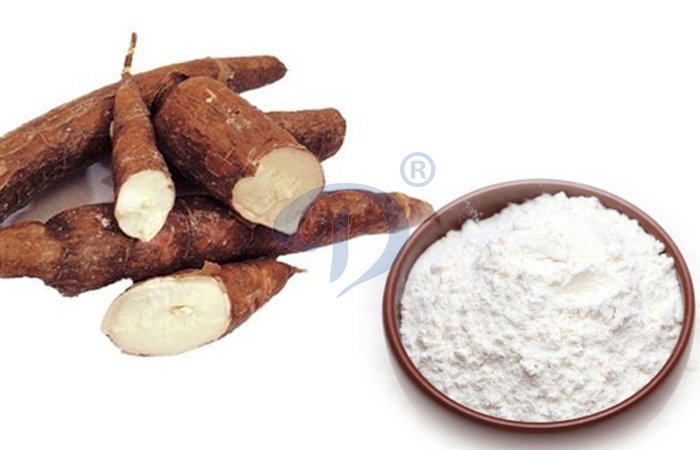What is the difference from native cassava starch to modified cassava starch?

Cassava starch
The development of both the food and non food uses of cassava starch has made much progress and continues to have a bright future. Both old and important new products, such as modified starches, starch sugars, starch-based plastics and fuel alcohol, are reviewed briefly.
What is the difference from the native cassava starch to modified cassava starch?
Native cassava starches
Cassava starch can be processed into two types: native cassava starch and modified cassava starch. Native cassava starches are produced through the separation of naturally occurring starch from either grain or root crops, such as cassava, maize, and sweet potato, and can be used directly in producing certain foods, such as noodles. The raw starches produced still retain the original structure and characteristics and are called “native starches”. Native cassava starch is the basic starch product that is marketed in the dry powder form under different grades for food, and as pharmaceutical, human, and industrial raw material. Native starch has different functional properties depending on the crop source, and specific types of starch are preferred for certain applications. Native starch can be considered a primary resource that can be processed into a range of starch products.
Native cassava starches have limited usage, mainly in the food industry, because they lack certain desired functional properties. The native starch granules hydrate easily when heated in water, they swell and gelatinize; the viscosity increases to a peak value, followed by a rapid decrease, yielding weak-boiled, stringy, and cohesive pastes of poor stability and poor tolerance to acidity, with low resistance to shear pressure, as commonly employed in modern food processing.
However, food, metallurgic, mining, fermentation, construction, cosmetics, pharmaceutical, paper and cardboard, and textiles industries among others use native starch in its traditional form.
Modified cassava starches
For those characteristics, which are unattainable with native cassava starch, modified cassava starch can be used for other industrial applications through a series of techniques, chemical, physical, and enzymatic modification. Thus, modified starch is native starch that has been changed in its physical and/or chemical properties. Modifications may involve altering the form of the granule or changing the shape and composition of the constituent amylose and amylopectin molecules. Modifications are therefore carried out on the native starch to confer it with properties needed for specific uses. When a starch is modified chemically or physically, the properties of the native starch is altered. Various modifications give the starch properties that make it useful in many industries such as food, pharmaceutical, textile, petroleum, and paper pulp industries.
The different ways of modifying native starch consist in altering one or more of the following properties: paste temperature, solids/viscosity ratio, starch paste resistance to reduction of viscosity by acids, heat and or mechanical agitation (shear), retrogradation tendencies, ionic and hydrophilic nature. Modifying starch is important to provide the following properties: thickening, gelatinization, adhesiveness and/or film-formation, to improve water retention, enhance palatability and sheen and to remove or add opacity.
The reasons why native cassava starch is modified are:
To modify cooking characteristics (gelatinization).
To reduce retrogradation.
To reduce paste’s tendency to gelatinize.
To increase paste’s stability when cooled or frozen.
To increase transparency of pastes and gels.
To improve texture of pastes and gels.
To improve adhesiveness between different surfaces, such as in paper applications.
Modification can be as simple as sterilizing products required for the pharmaceutical industry or highly complex chemical processes to confer properties totally different from the native starch. A simple modification process is represented by washing, air classification, centrifugation, and pre-gelatinization.
Leave a message about What is the difference from native cassava starch to modified cassava starch?
- Do you want to buy machine?
- Yes, I want to buy machine
- No, I want to learn more in advance.
- What is your raw material?
- Cassava
- Potato
- Sweet potato
- Others
- 2. What is the final product you want to produce?
- Garri
- Cassava flour
- Cassava starch
- Cassava chips
- Attiekie
- Bammy
- Others
- 3.What is your capacity plan?
- Small scale garri machine
- 1ton per day
- 2tons per day
- 3tons per day
- 10tons per day
- 20tons per day
- Others
- 3.What is your capacity plan?
- Small scale
- 5tons per day
- 10tons per day
- 20tons per day
- 50tons per day
- 100tons per day
- Others
- 3.What is your capacity plan?
- Small scale
- 5tons per day
- 10tons per day
- 20tons per day
- 50tons per day
- 100tons per day
- 200tons per day
- 300tons per day
- Others
- 3.What is your capacity plan?
- Small scale
- Middle type
- Large scale
- What is your capacity plan?
- Small scale
- 5tons per day
- 10tons per day
- 20tons per day
- 50tons per day
- 100tons per day
- 200tons per day
- 300tons per day
- Others



